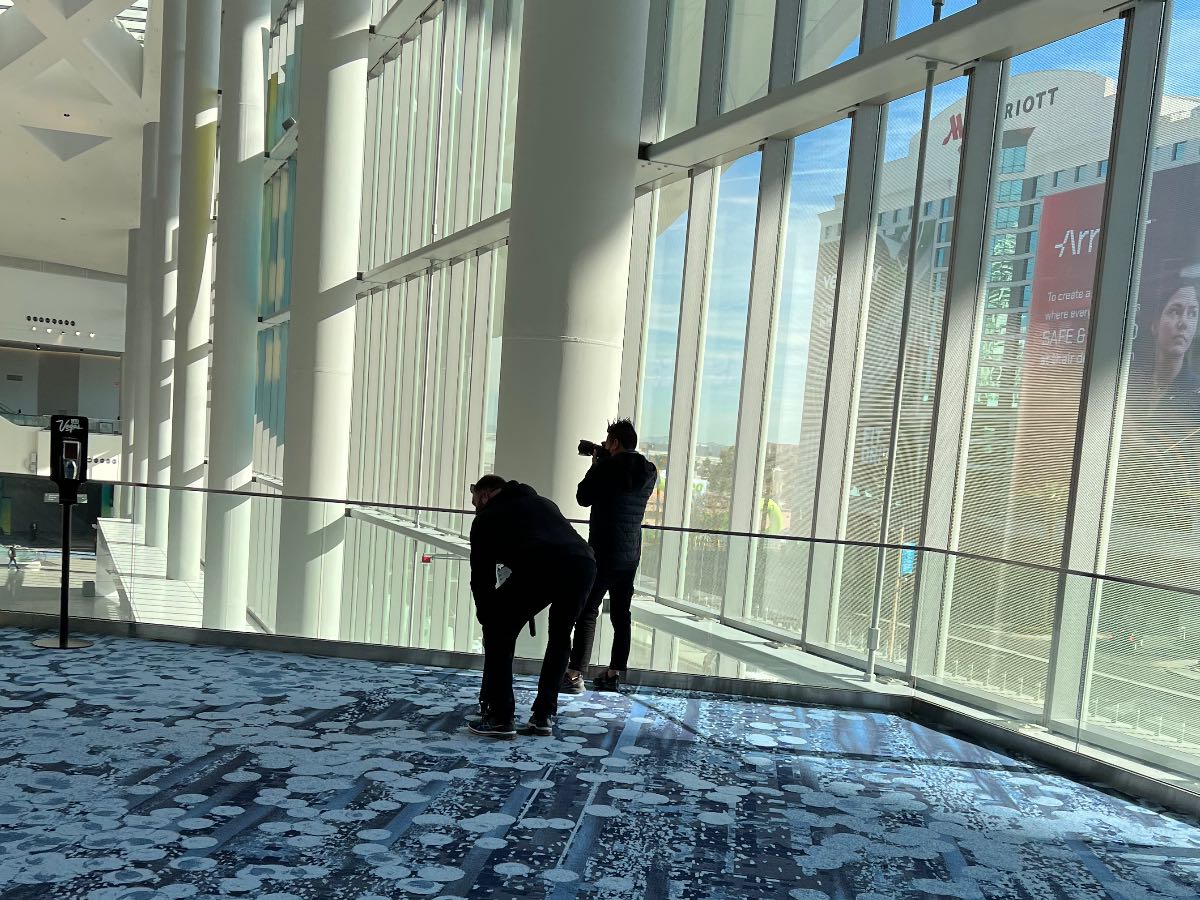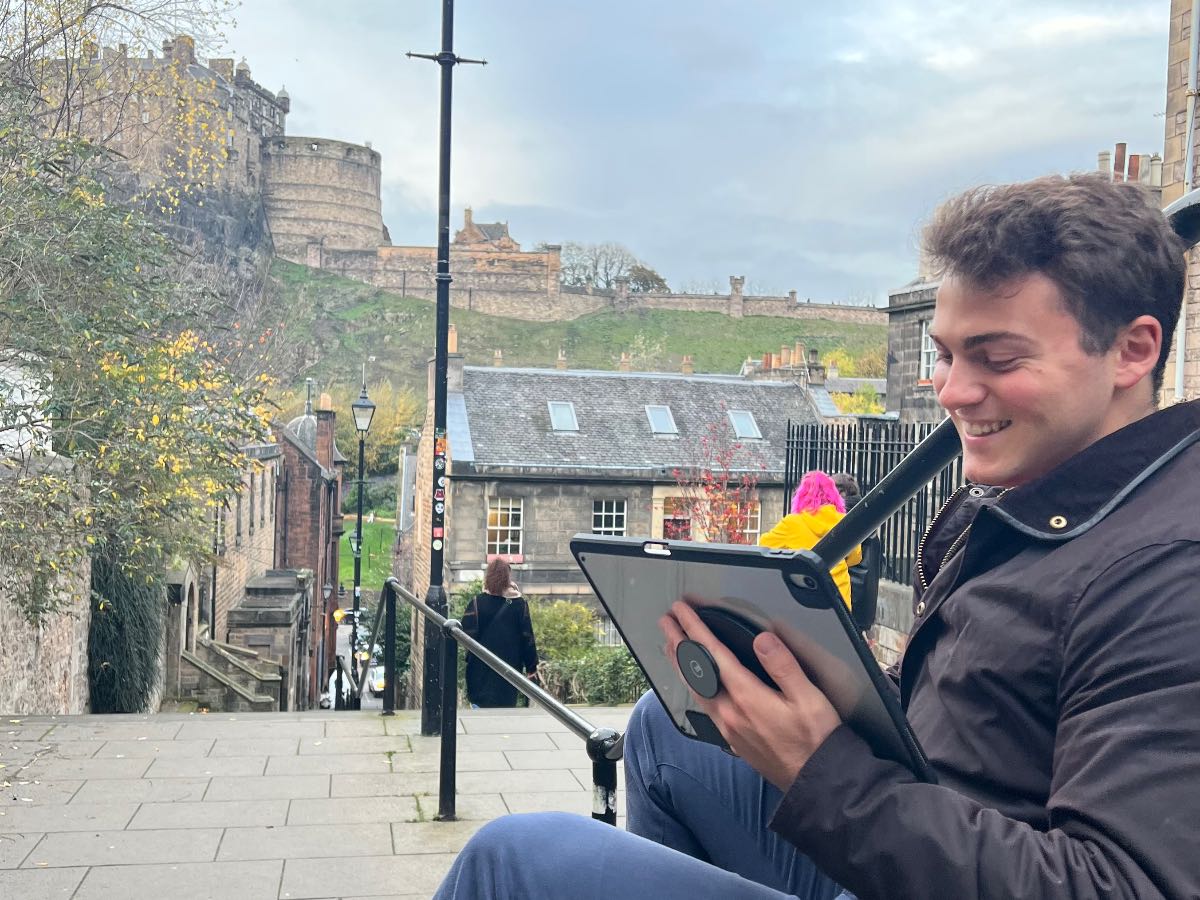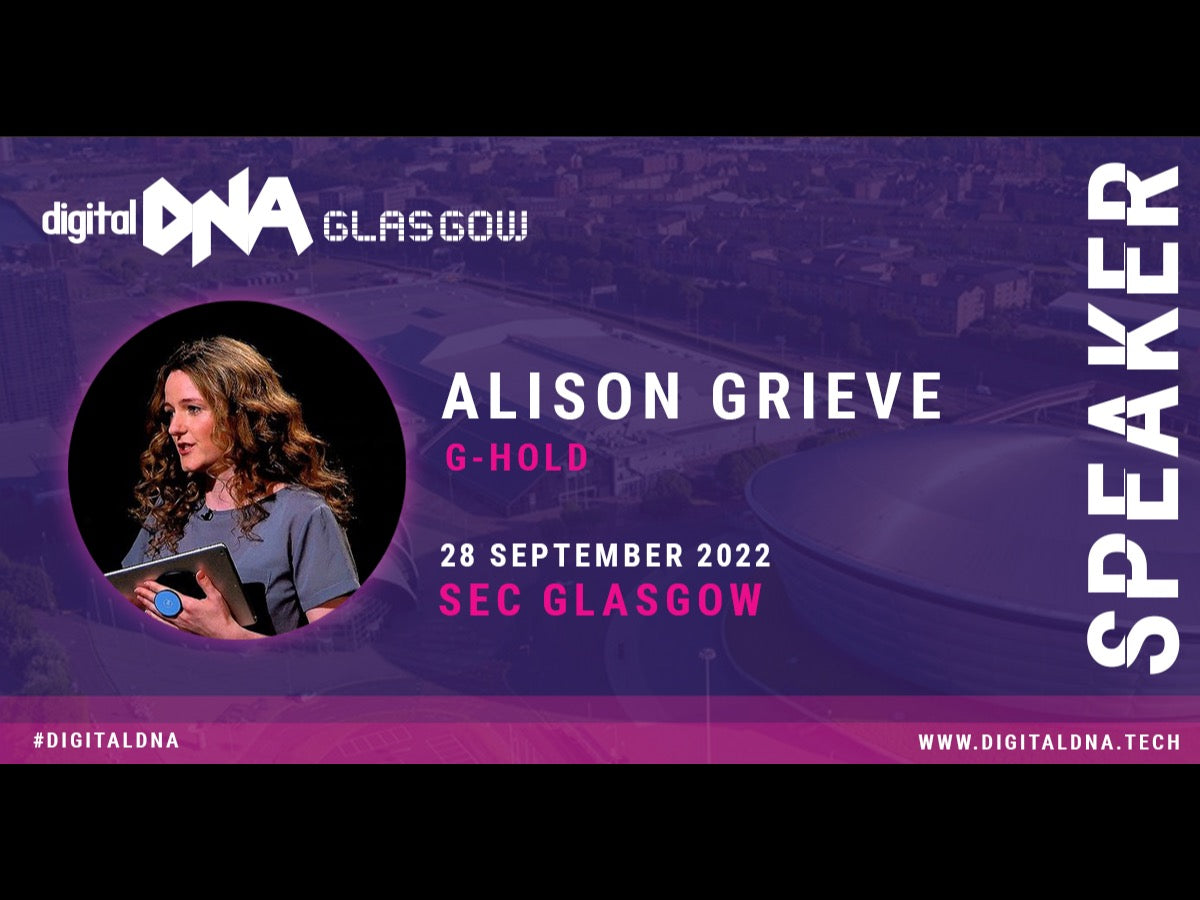Exam Revision Tools for Visual & Kinesthetic Learners

While most people are capable of using any one of four basic styles to learn information - Visual, Auditory, Reading/Writing and Kinesthetic (VARK) - their dominant style reflects their preferred forms of instruction and the easiest means to absorb new knowledge.
In this video, we focus on the journey of Joshua Tawhai, a visual learner / kinesthetic learner, who struggled to learn through text-based instruction and revision notes alone. He describes how utilising the Adobe Express app on his iPad (with a G-Hold Tablet Holder) to create graphic posters, and using them to create a video on the Cute Cut Pro video editing app, transformed his learning experience, moving him up three grades in the SQA Higher Business Management exam 2022.
The more physical of the four learning styles, kinesthetic learners, best absorb information by touch and movement, and are most successful when they are fully engaged in a learning activity. They gain the information faster by engaging in a science lab, field trip, dance or other activity that is highly interactive. The ability to move around different environments when using the iPad and G-Hold tablet holder combination, and also using the touch screen technology, is a more interactive way for kinesthetic learners to absorb knowledge than copying textual notes from a classroom board.
Visual learners are engaged by vivid colours and graphic diagrams, and they may also be taught through videos, demonstrations, and class materials. Visual learners learn best when they can see the material being taught. Visual learners can take charge of their learning experiences through techniques that tailor different learning methods to their visual strengths. The Adobe Creative Cloud is an ideal suite of learning resources for visual learners and the ‘Shapes’ chooser in Adobe Express offers an extensive range of icons that students can select to represent concepts in a way that they will remember.
Most studies on visual learning found that visual teaching styles, in contrast to traditional teaching styles, significantly improved the overall quality of the students’ learning experience. By understanding the type of learner that you teaching, you can better understand how to incorporate the visuals into your lesson plans and instructional techniques. Providing agency to your students, encouraging them to choose their own visual prompts, also deepens their engagement in the subject and tailors the lesson to their own personal learning journey.
Identifying your students as visual, auditory, reading/writing or kinesthetic learners, and aligning your lesson plans to those learning styles, will prove to be helpful in engaging your whole class. When choosing class activities, whether they are designed for visual learners or for other learning styles, make sure that as many stimuli are included as possible to appeal and engage as many students as possible.
When using a main board in the classroom, be sure you are able to include visual aids, audio cues, kinetic movement and social interaction, reading out verbally any written text, and providing the students with the chance to review what they have just learned alone, and in their own time. Rushing through lessons without leaving enough time and space for the information to be absorbed and understood by the students in their own learning style, can overwhelm some learners.
Recommending study habits for individuals who prefer visual, auditory, kinetic, and read/write methods can transform their learning experience, and there are so many apps on the iPad that can support these different learning styles.
Those who learn best through reading and writing like to engage with text, which is much more powerful to them than hearing or seeing images. When studying, a hearing learner may be better at memorising material if they talk about it with someone else, as the recall from the conversation is easier than the visual images of words on the page.
According to the Fleming VAK/VARK model, visual learners organise and process information more fully when learning visually, which helps them to comprehend the information better. Someone with the visual learning style has a predilection to look at or watch things, including pictures, diagrams, demos, displays, lecture notes, movies, flip charts, etc.
Using an App Smash of various apps, such as those available on Abobe Creative Cloud, iMovie, Keynote, Clips, Canva or Sketches School for younger learners, is an ideal way to engage with visual learners whilst also increasing their digital skills to prepare them for the world of work.
Education has traditionally focused on language-based and logic-mathematical styles of learning, however, student-centered models of teaching, such as Montessori methods, have found success helping children learn in ways that are best for them. The theory that students learn best when presented with content in the mode they are best equipped to understand has been proven in numerous studies, and offers the hope that every child’s learning can be maximised through programming for individual types of learners.
Thanks to the vast array of education apps now available on the iPad today, it has never been more possible to accommodate visual, kinesthetic and all other types of learners in a way that will maximise their potential. Joshua’s story is a wonderful example of that, moving up three grades in less than a month, boosting his self-confidence and positively impacting his perception of learning and education forever.
Sources:
[0]: https://www.educomics.org/how-to-teach-visual-learners/
[1]: https://www.familyeducation.com/school/multiple-intelligences/learning-styles-visual-auditory-kinesthetic
[2]: https://teach.com/what/teachers-know/learning-styles/
[3]: https://www.umassd.edu/dss/resources/faculty-staff/how-to-teach-and-accommodate/how-to-accommodate-different-learning-styles/
[4]: https://www.thoughtco.com/understanding-visual-learners-7998
[5]: https://en.wikipedia.org/wiki/Visual_learning
[6]: https://www.rasmussen.edu/student-experience/college-life/most-common-types-of-learners/
[7]: https://www.whitbyschool.org/passionforlearning/auditory-visual-and-kinesthetic-helping-children-succeed-through-different-learning-styles
[8]: https://pridereadingprogram.com/the-visual-learner/
[9]: https://www.atlassian.com/blog/teamwork/how-to-work-4-different-learning-types
[10]: https://www.readingrockets.org/article/do-visual-auditory-and-kinesthetic-learners-need-visual-auditory-and-kinesthetic-instruction



